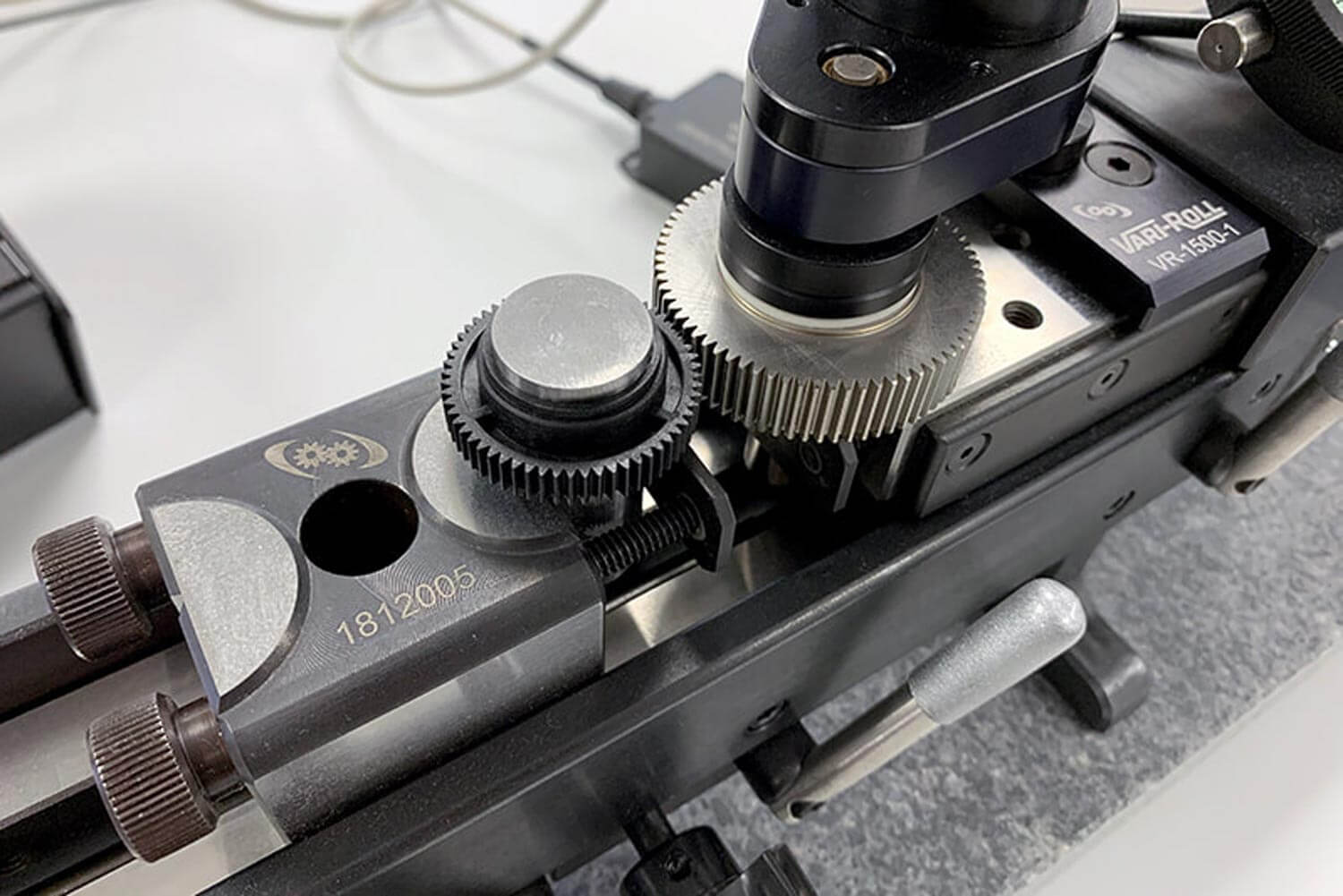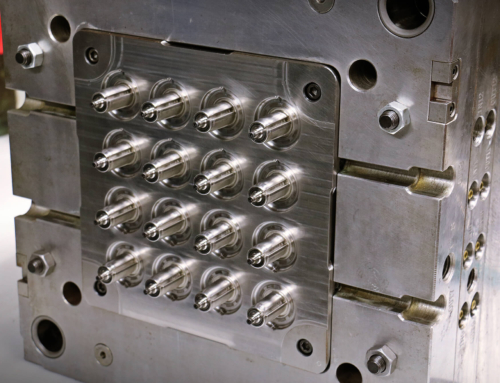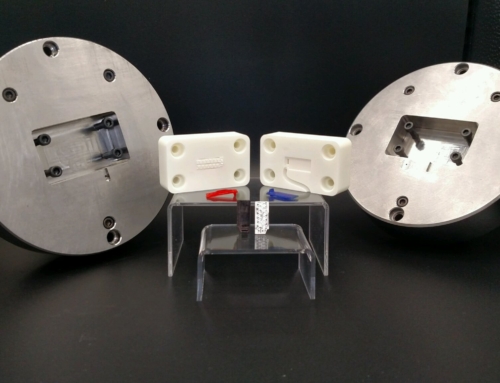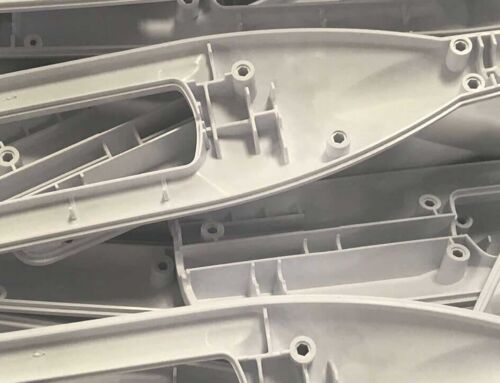Molding Plastic Gears: Frequently Asked Questions (FAQ)
When it comes to injection-molded plastic gears, Forum Plastics is uniquely qualified to assist you with design and product development. Our engineering team is specialized in gear tooling and production process implementation for performance optimization and moldability. Forum focuses on developing tools and mold products to ensure repeatability and part accuracy to meet your exact specifications.
Here are answers to some frequently asked questions to help you understand Forum’s precision plastic gear capabilities.
What factors are considered with injection-molded gear design?
Gear tooth design: Tooth design is one of the most critical aspects of a quality gear. The involute profile affects mesh efficiency, noise, vibration, wear, gear train accuracy (timing or distance applications), and overall life/number of cycles.
Overall part design: Part design is important when considering injection-molded gears. Unlike metal gears, plastic gears need special attention in terms of uniform wall thickness, gate location, number of gates, and ejection. In addition to part design, tool design is just as important. In order to achieve a high-quality AGMA standard gear, there are many factors that need to be included in the tool, including interlocking cavities, consistent and uniform cooling lines, accurately cut tooth forms, and fine surface finishes for the tooth profile itself and the rest of the geometry that is in the line of draw. Distortion from sticking during ejection can have serious effects on gear quality.
Gear layout: When properly designed, plastic gears can transmit significant loads without having to be oversized when compared to metal gears. This is a benefit for designers who are looking to reduce cost while keeping a gear train layout in an existing footprint.
What materials are used in your molding?
There are many materials to consider when designing plastic gear trains. The majority of gears use materials in the Acetal family, both co-polymer and homo-polymer. These materials typically have added lubricants to help extend life and reduce wear. However, Acetals have large shrink rates and care must be taken in the product design to account for this. Other materials to consider include Nylons and PEEKs.
All of these materials can have fillers such as glass fiber or beads to help add strength to a tooth form. For commodity, low-grade gear trains, many other materials can be used since their AGMA quality standards may not be as tight.
How do you design to minimize the need for lubrication?
Having a good contact ratio between mating gears is essential to reduce wear, extend life, and reduce the need for lubrication. It’s important to understand the slide/roll ratio between mating gears. A perfect gear mesh will consist of full roll contact. When gear teeth slide during meshing, this promotes wear and can lead to tooth face pitting and premature failure of the gear.
Depending on the application, a gear train may not need lubrication. If lubrication is added, be sure to understand the chemistry of the lubricant and whether it may have an effect on the plastic you are using.
How do you ensure part uniformity?
Part geometry plays an important role in how uniform or round a gear will be after it is molded. Just as critical is how many gates are used to fill the part and their locations on the part. A gear with three gates evenly spaced on its face will produce an out of round condition with three high spots (peaks) and three low spots (valleys). Using five gates will still cause an out of round condition, but its magnitude will be reduced since the gear diameter (consisting of 360°) is broken into five segments (between the gates) and not three. This holds true with the more gates you add.
One of the most beneficial gates for a gear is a diaphragm gate. When this type of gate can be used is dependent on the design of the gear bore. A diaphragm gate fans out the melt flow evenly and produces a consistently round gear with minimal peaks and valleys.
What factors are considered for metal-to-plastic gear conversions?
Metal-to-plastic conversion of gear trains is becoming more and more common as companies look to reduce product costs. Some of the main items to consider are the loading requirements, environmental conditions such as temperature, humidity, UV exposure, oils, grease, and dust, and life expectancy.
While plastic gears can be designed to replace metal, not all applications allow for this. Often a hybrid approach is needed where the highest loaded gear in a train may need to be metal (hobbed, formed or even powdered metal). As the loading is reduced further down the gear train, plastic gears can be added.
When done properly, plastic gears can be manufactured to high quality standards with little part-to-part variation. Tight tolerances can be achieved on the same magnitude as precision metal gears. However, as gears grow in size so do the tolerances. This needs to be factored into a metal-to-plastic conversion.
Economies of scale are also important. If only a handful of gears are needed, it may not make financial sense to build an injection mold and make them out of plastic as opposed to having a few machined from metal or even plastic. However, plastic gears make excellent financial sense when the annual volumes increase past a few dozen to thousands and even millions. While tooling costs could be high, there are significant cost-saving opportunities in the part cost.
What type of software do you use?
When designing a precision gear, it’s important to not only have the right equipment, but to also have the right software solution. That’s why Forum Plastics utilizes KISSsoft to interface with SOLIDWORKS.
KISSsoft is a modular calculation program for the design, optimization, and verification of machine elements according to international standards. It’s an industry-recognized software solution used in the design of all common gears including cylindrical, bevel, worm, cross helical, hypoid and face gears. The calculations adhere to all industry standards including ISO, DIN, AGMA, and VDI.
How does Forum leverage KISSsoft in the development, engineering, and design of an injection-molded gear?
KISSsoft gear design software is used to design gears and gear trains. This software generates a true involute profile which is needed for a high-quality gear train. Many companies say that they can design a gear, but most don’t consider the intricacies of the involute profile. Additionally, the software allows gear meshes to be analyzed to properly design a gear train for specific loading and thermal conditions that it will be exposed to in the application.
Forum Plastics: An Industry Leader in Precision Plastic Gears
With sophisticated processes and a highly skilled engineering team, we have over 10 years of experience in specialized gear tooling and production process implementation for performance optimization and moldability. Our team leverages KISSsoft and focuses on no mesh interference to avoid binding, adequate contact ratio to minimize noise, teeth designed specifically for the application, and meshing teeth balanced for tooth strength and minimal wear.
To learn more about Forum’s precision plastic gears, visit our website or contact Andrew Butkus, Engineering Manager.
Stay Connected
Sign up to get updates from Forum





